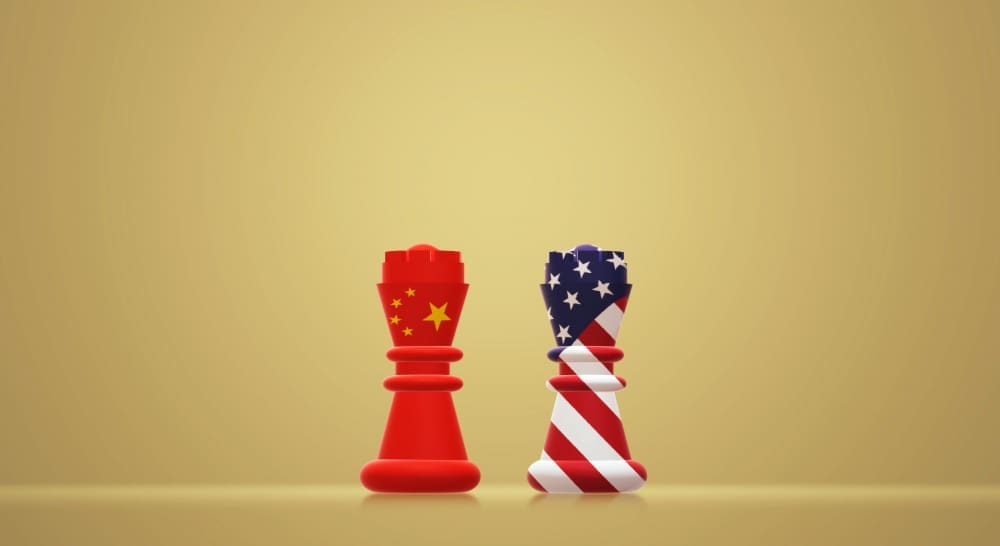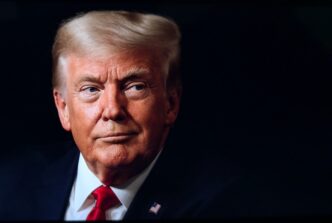STOCKHOLM – For the third time in as many months, top American and Chinese officials are set to meet in Europe for critical trade talks, but this time, the dynamic has fundamentally shifted. When negotiations begin here on Monday, the Chinese delegation will arrive more emboldened and confident than ever, armed with newfound economic leverage and a growing appetite for significant U.S. concessions.
After months of weathering President Donald Trump’s trade war, Beijing now believes it holds a stronger hand. A resilient economy that has defied Western predictions of collapse, coupled with China’s powerful grip on strategic minerals—a grip it has successfully used to force a stunning U.S. reversal on a key technology ban—has reshaped the negotiating landscape.
The talks in Stockholm, led by U.S. Treasury Secretary Scott Bessent and Chinese Vice Premier He Lifeng, are ostensibly aimed at extending a fragile 90-day trade truce set to expire on August 12. But beneath the surface, this round of negotiations will serve as a crucial test of whether the United States can maintain its hardline stance against a rival that is no longer just absorbing punches, but is now learning how to throw them back.
The Source of Beijing’s New Confidence
China’s hardened posture is not built on rhetoric, but on tangible results that have surprised many in Washington. The Chinese economy, despite facing U.S. tariffs of around 55% on its goods, has demonstrated remarkable resilience. It has posted better-than-expected growth figures and a record trade surplus, underscoring its successful pivot to other markets and its ability to withstand the pressure campaign from the Trump administration.
More importantly, Beijing has learned the power of its own economic leverage. The most striking example came in recent months when China’s control over the global supply of rare earths—minerals essential for everything from fighter jets to electric vehicles—compelled the Trump administration to make a stunning reversal, lifting its export ban on a key high-performance AI chip from Nvidia that China coveted. This move was a clear admission by Washington that it cannot afford to be completely cut off from China’s critical supply chains.
This newfound confidence was on full display just days ago at a summit with the European Union, where Chinese officials offered few concessions on the bloc’s concerns over trade imbalances and the war in Ukraine, reinforcing a tough, uncompromising approach that is now expected to be directed at the U.S. delegation in Stockholm.
“After this period of US-China rivalry, the US side has come to realize that China holds significant cards – and more importantly, is willing to play them when necessary,” said Wu Xinbo, director of the Center for American Studies at Fudan University and an adviser to China’s foreign ministry.
A Fragile Truce on the Line
The Stockholm talks aim to build on a precarious 90-day detente struck at a tense meeting in Geneva in May, which pulled the world’s two largest economies back from the brink of a full-scale trade war involving triple-digit tariffs. That truce was nearly shattered in June before further talks in London managed to keep it alive, though each side has since accused the other of reneging on its promises.
Now, the negotiations will offer vital clues as to how much longer this ceasefire can hold. While U.S. officials are publicly optimistic, the underlying tensions remain raw.
Treasury Secretary Scott Bessent, who is leading the U.S. delegation, has struck a positive tone, saying “trade is in a very good place with China” and that the two sides would be working out a “likely” extension of the truce. President Trump himself has appeared to dial down his confrontational approach, speaking enthusiastically about a potential visit to China to meet with President Xi Jinping in the “not too distant future.”
However, this softer rhetoric is directly at odds with the actions and words of other parts of his administration. U.S. Commerce Secretary Howard Lutnick recently denounced as “outrageous” China’s decision to impose an exit ban on a U.S. Commerce Department employee and a Wells Fargo executive, casting a dark shadow over the talks.
Furthermore, Bessent has stated that the U.S. will use the talks to confront China over its continued purchase of sanctioned oil from Russia and Iran. Washington has threatened 100% secondary tariffs on countries that buy Russian oil, a move that would primarily target China and India. The proposed spinoff of TikTok’s U.S. operations, which requires Beijing’s approval, is another thorny issue on the U.S. agenda.
What China Wants
For Beijing, the objectives in Stockholm are clear. According to Chinese state media and affiliated experts, the top priority is to secure a rollback of the punishing U.S. tariffs. The current rate, estimated to be around 55%, is a combination of a 10% “reciprocal” tariff, pre-existing duties, and, most contentiously, a 20% levy imposed by Trump over what he claims is China’s role in the flow of illegal fentanyl into the United States. Chinese negotiators will be pushing hard for the removal of the fentanyl-related tariffs, especially after Beijing recently took steps to add more fentanyl precursors to its list of controlled substances.
Beyond tariffs, Beijing is expected to demand that Washington ease its technology export controls. During his first term, Trump began placing hundreds of Chinese tech firms, including national champion Huawei, on the Commerce Department’s “Entity List,” which severely restricts their ability to buy U.S. technology. Beijing sees these restrictions as a direct attempt to cripple its technological advancement and will seek their removal as a key concession.
The “Cards” Beijing is Ready to Play
The new confidence in Beijing stems from a strategic realization that its central role in global supply chains is a powerful weapon. Chinese officials and advisers now openly discuss their “cards.” Wu Xinbo explained that this leverage extends far beyond rare earths to include China’s dominance in the supply chains for drones and electric vehicle batteries. The required approval from Beijing for the divestment of TikTok’s U.S. operations from its Chinese parent company, ByteDance, is another point of leverage.
“In the past, we didn’t consciously use these cards,” Wu said. “Now, I believe China will increasingly take the initiative to consider playing them.”
An Uncertain Path Forward
As the talks begin, the most probable outcome, according to many analysts, is another temporary solution.
“Right now, all signs point to another 90-day continuation where tariffs remain at their current levels and negotiations continue – with the likelihood of a Trump-Xi meeting in the fall,” said Josh Lipsky, chair of international economics at the Atlantic Council.
But he quickly added a crucial warning: “Just as we learned in the spring, the situation can turn on a dime and whether it’s the exit bans or another flash point, this is a fragile ceasefire.”
The Stockholm talks will therefore be a tightrope walk. The U.S. administration must balance its desire for a deal with the political reality of not appearing weak in the face of a more assertive China. For China, it’s a chance to use its newfound leverage to extract tangible concessions and reset the terms of its economic relationship with the U.S. For the rest of the world, it is a moment of profound uncertainty, with the stability of the global economy hanging on the outcome of the negotiations in this quiet European capital.








